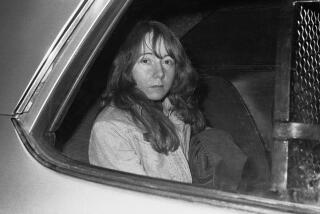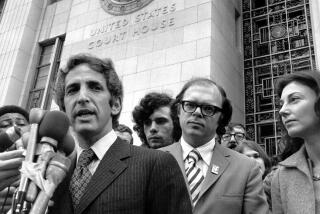Cop at JFK killing searched depository, called out, ‘Here’s a rifle’
DALLAS — Back in 1963, Dallas Sheriff’s Deputy Eugene Boone rushed to the scene of the shooting of President John F. Kennedy.
As the 50th anniversary of the assassination approaches, Boone, 75 and living in Abilene, Texas, shared memories of that day, including how he happened to know Jack Ruby. He also described two searches — one of a rail yard, the other of the Texas School Book Depository, where he found the rifle used by Lee Harvey Oswald.
On Wednesday, Boone will participate in a panel discussion of assassination witnesses at the Sixth Floor Museum, located in the former book depository.
What do you remember about the morning Kennedy’s motorcade headed into Dallas on Nov. 22, 1963?
The sun was shining and it was a cool, brisk day. Dallas is really a beautiful city, and the route they took down Cedar Springs and Turtle Creek is one of the most beautiful routes there is in any of the states. It was really the warmest greeting he had received since coming to Texas. The next minute he enters death’s door.
Where were you when Kennedy was shot?
I was in front of the sheriff’s office at 505 Main Street. By the time the third shot was fired, I was running across Houston Street.
As I came around the reflecting pool [in Dealey Plaza] I noticed two people to my right on the ground and thought, “There’s two dead ones there.” Then they began to get up, and I ran to the grassy knoll and helped a motorcycle officer over the fence. He pulled me over. The other officer went to the post office annex and I went to the rail yard.
What did you see back there?
I saw Pullman cars, and investigated one man who was working on the cars. He said he hadn’t seen anybody or heard the shots. I also talked to a man in the railroad control tower who said he didn’t see anyone run in, didn’t hear the shots. I searched through the freight yards, cars, then returned to where the spectators were.
I talked to H.W. Betzner, who had taken some photos at the time of the shots, took him to the sheriff’s office, and they took the film.
What did you do after that?
I returned to the [book] depository and searched the hedge, fence and flower beds, which were undisturbed. Large battery-powered flashlights had been brought over to the steps of the depository. I took one and went up to the sixth floor.
A few deputies worked their way across, looking for anything that didn’t belong. Deputy Luke Mooney found the “sniper’s nest.” He went over and found a stack of books that could have been used as a sniper’s nest and a partly eaten chicken meal.
We moved to other areas and I found a case of books pushed across to conceal a rifle. I called out, “Here’s a rifle!”
What did the rifle look like?
I never touched the rifle… It was in a narrow crevice not much bigger than the weapon. It looked like had been shoved there as someone headed for the staircase. It had a wood stock, it was a World War II surplus weapon, an Italian [Mannlicher]-Carcano rifle.
What happened next?
I returned to street level where officers were taking statements. One of the employees said, “I don’t know if you’re interested, but one of the employees is not here: Lee Oswald.” His general description went out on the police radio.
Where did you go next?
I went back to the sheriff’s office. It seemed to be pandemonium, but I sat down at my desk and made my report. The sheriff’s office was chaotic because the world press were there trying to get anybody to say anything or do anything so they could report. There were also some FBI people there, Secret Service, onlookers outside… That whole area was real turbulent.
You knew J.D. Tippit, the police officer who Oswald fatally shot that day. What do you think happened when he ran across Oswald in the Oak Cliff neighborhood of Dallas?
He was an 11-year veteran. I don’t believe he knew [Oswald] was the assassin of the president, otherwise the strap would have been off his gun. When they found him, the strap was on in his holster.
Before you became a sheriff’s deputy, you worked in the advertising department of the Dallas Times Herald and ran ads for nightclub owner Jack Ruby, the man who killed Oswald. What was Ruby like?
In order to run an ad, he had to pay first. He was always late trying to get ads in for the next day’s newspaper. Many days I had to wait for him to get in.
I knew Jack to be a Kennedy supporter. I think he thought he could shoot Oswald, be the man who shot the man, and no jury would ever convict him and he could go back and have more business than ever.
Where were you when Ruby shot Oswald as he was being transferred from police headquarters to the county jail?
I was behind the jail office with the sheriff and several deputies when the transfer was going on. Somebody ran out and said, “There’s a fight at City Hall!” Before I could get inside, someone else came out and said, “There’s been a shooting.” By time I got in, my wife, Charmaine, had called to say, “It looks like Jack Ruby shot Oswald.” I told the sheriff, who said the same thing: “It couldn’t be Jack.”
Were you ever questioned by investigators?
On Wednesday, March 25, 1964, I was subpoenaed to testify before the Warren Commission.
Do you think there was a conspiracy to cover up the true nature of the assassination?
If there was a conspiracy, the conspiracy was getting Oswald in the right place at the right time to accomplish such a feat.
The JFK film [by Oliver Stone] made a big deal about the tree in front of the sniper’s nest — it wasn’t a problem then. The branches barely reached the windowsill.
Have you been back to Dealey Plaza to revisit your memories of that day?
I’ve been back to that spot several times, including for the History Channel… London TV did a documentary where I traveled there. This year I’ve done interviews for the anniversary with papers from Spain, the Netherlands, Belgium and Finland.
On the audio tour at the [Sixth Floor] museum, I do the first part, through the sniper’s nest.
Have you shared your story with your family?
I have two boys and a girl, six grandchildren and a great grandson, most in Texas, some in Abilene. I have told them the history, and I also speak to civic clubs from time to time. More and more of the audiences — they weren’t born then.
What do you hear from audience members who were alive back then?
This is one of those kind of events where you remember just what you were doing when it happened, similar to 9/11. It’s just one of those monumental events that people remember just exactly what they were doing and thinking.
ALSO:
Native American code talkers to be honored
After DNA test, white supremacist charged with terrorizing town
911 tape: George Zimmerman girlfriend says he pointed gun at her face
More to Read
Sign up for Essential California
The most important California stories and recommendations in your inbox every morning.
You may occasionally receive promotional content from the Los Angeles Times.











